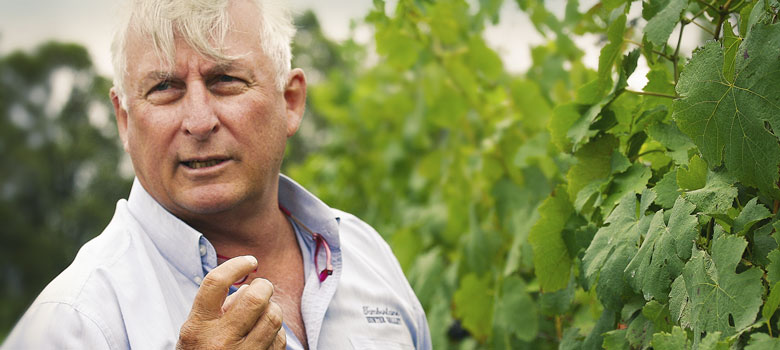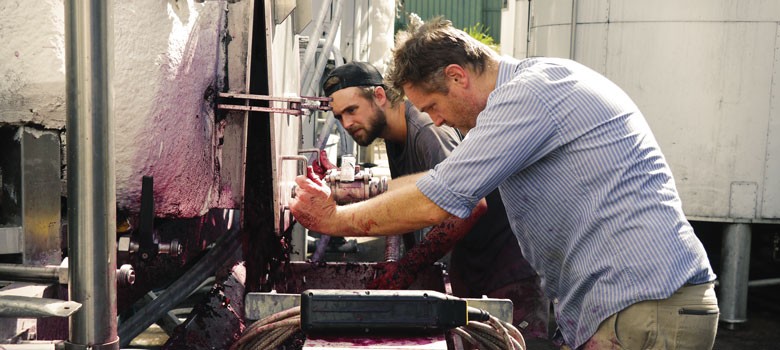
Wine
Contemporary Organics
In part two of Tamburlaine’s series on contemporary organics, Mark Davidson explains the process in terms of organic winemaking.

People around the globe are seeking out quality organic products at a rapidly increasing rate. But what does this really mean and how does this influence winemaking practices? While most people know of organic winemaking, not everyone understands the reasons behind making wine this way. Fewer still comprehend the processes involved.
Mark Davidson, Managing Director and Chief Winemaker at Australia’s largest organic wine brand, Tamburlaine Organic Wines, has put together a diagram that helps explain the principles and stages involved in Contemporary Organic Winemaking (see above).
But before examining that, Mark believes there must be some context as to why organic farming is important in today’s world. Put simply, he fundamentally believes that organic farming is the future – it is both common sense and good for the environment as a whole.
He points out that, even though the wine industry is not a heavy chemical user by comparison with some other agriculture, commonly-used pesticides, fungicides and herbicides (weed killers) are gradually causing significant but silent collateral damage to the environment and potentially ourselves.
Contemporary and organic
Adopting modern organic principles in agriculture is just a sensible next step. Consumers are more and more informed. Tamburlaine is not alone in its move to organic for wine quality either. Many prestigious producers in Australia and around the world are doing the same. “Organic winemaking is not some marketing gimmick, but is based on sound agricultural thinking,” says Mark.
So what is contemporary organic winemaking? The diagram above is a good place to start.
“There is an interconnectedness between the whole process of growing grapes and making wine and it all feeds into each other in a very sustainable way,” Mark explains.
“The point about it is, you don’t have to understand the scientific basis of everything, rather just understand there is a cycle and an interconnectedness.”
Some explanation

Of course, for those people who don’t understand farming or science, the question remains, how does organic winemaking work commercially? Therefore, there needs to be some explanation of the labels around the cycle.
For instance, the concept of optimising organic matter.
“This goes hand in hand with good farm management,” explains Mark. “Optimising organic matter helps generate necessary nutrients naturally and means that soils hold moisture better. The less nutrients you have to apply saves the farmer time and money.
It also results in increased biological activity in the soil. This allows for quicker transfer of any nutrient applications to the vines. Heathier vines means better disease resistance and ultimately, healthy grapes.”
The next concept of the Contemporary Organics Cycle that often needs some explanation is biodegradable inputs.
“When we are talking about inputs, we mean anything that we put into the vineyard such as pesticides, herbicides, fungicides and fertilisers,” explains Mark.
“Any of these that are not biodegradable or naturally broken down quickly in the environment, are potentially polluting and possibly harmful. Excess non-degradable inputs do not necessarily stay on the farm where they are applied; they could potentially end up in water tables and creeks and rivers.
“Alternatively, there are a host of certified inputs nowadays which are biodegradable and work brilliantly.”
The science of systemic
The other point important to biodegradable inputs is understanding the meaning of ‘systemic’. This is where chemical inputs not only get into the plant, but also end up in the fruit.
Additionally, Mark warns that systemic sprays that target pests also affect the ‘beneficial biodiversity’ – the good bugs on your farm that help nutrient life.
“These sprays are a problem because they’re indiscriminate. Not only do they kill the target pest, but the good bugs are removed at the same time, which totally disrupts the natural ecological balance of a vineyard that serves generally to protect the plants without any help from us.
Organic winemaking

The other important element that needs further discussion in the Contemporary Organics Cycle is organic winemaking. This refers to the time after harvesting when the grapes go to the winery to be made into wine.
Mark points out that contemporary winemaking in Australia is quite similar to organic winemaking practices. There is currently little or no use of genetically modified organisms in the winery across the industry, which is a good thing.
What organic winemaking does is limit the use of inputs such as sulphur dioxide. Sulfur dioxide is naturally found in wines as it is a byproduct of fermentation. Most winemakers add a little extra to prevent the growth of undesirable yeasts and microbes in the wine and to protect against oxidation. The allowable level of sulphur dioxide in dry wines by the Australian Food Standard is 250 parts per million. Organic certification limits this to 50%, or 125 ppm.
In addition, Tamburlaine also chooses to use vegetable protein fining additives instead of proteins from fish or eggs.
Award-winning wine
The end result is wine that is in no way inferior, and in fact, stands up in Wine Shows nationally and around the world.
“If medals are the definition of wine quality, then we are doing pretty well,” Mark says. “Trophies in shows in the Hunter Valley and Orange – where we have our vineyards – as well as top gold and trophies in the National Highlands Show, the NSW Wine Awards, the National Cool Climate Show and the Royal Melbourne Show in very recent times, further vindicate our decision to follow the contemporary organic path.
“The wines also stood up very well again at the International Organic Wine Show in Germany this year, which has picked up increasing entrants from all major winemaking regions around the globe, as the movement to embrace organic winemaking builds based on sound scientific evidence.”
In the next instalment of Tamburlaine’s discussion on Contemporary Organic Winemaking, Mark takes a closer look at the use of sulphur dioxide, vegan inputs and the concept of preservative-free wines.
To read more great stories like this one, pick up the latest issue of Selector Magazine at newsstands from Nov 7.